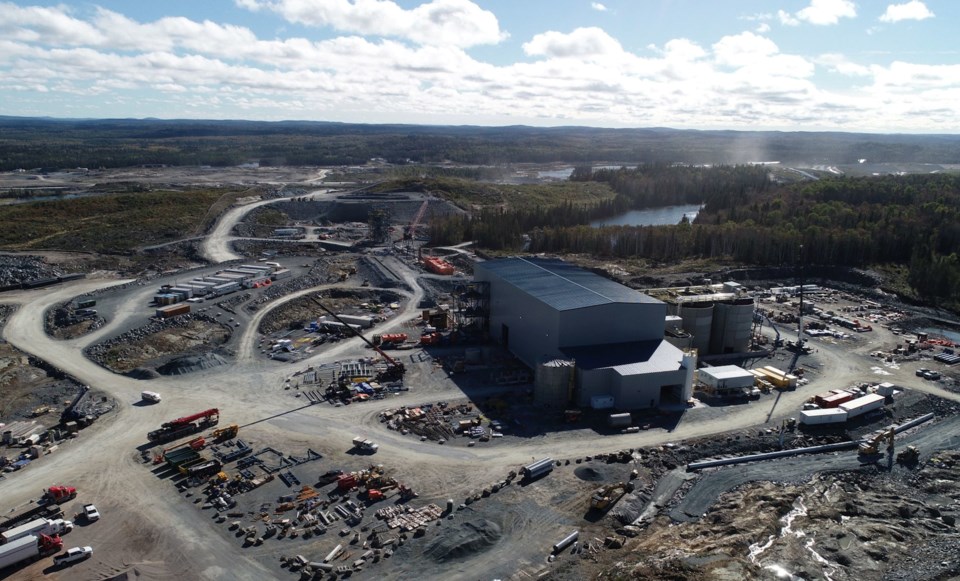Argonaut Gold is approaching the finish line for its Magino gold mine project, outside Dubreuilville.
The Toronto mine builder expects to make its first gold pour sometime later this month, pending the arrival of one last provincial permit as the $980-million project shifts from the construction stage to an operating open-pit mine over the next few months.
“Magino is the future of Argonaut Gold,” said Richard Young, the company’s president-CEO, in a May 5 webcall on the mid-tier miner’s first quarter earnings. The company posted a net loss of US$10.4 million in the quarter.
Young said construction at Magino remains on track to finish up this quarter, along with the processing plant.
The start of commercial mining operations will be the third quarter of their fiscal year, meaning a mid to late-summer start.
Pre-commercial production mining started over the winter during construction of the pit. About 200,000 tonnes of ore has been stockpiled so far and is ready to run through the mill.
This is Toronto-based Argonaut’s first Canadian mining asset, outside of its four other mines in Mexico and Nevada. Magino is poised to be the company’s flagship operation.
The mine project is 14 kilometres southwest of Dubreuilville and 40 kilometres northeast of Wawa. Its neighbour to the east is Alamos Gold’s prolific Island Gold Mine, currently undergoing its third phase of underground expansion.
Magino is a revival of a former underground gold mine of the same name which was first developed after the First World War. It ran sporadically over the decades producing 114,319 ounces. Development of the new Magino Mine began in early 2021.
Company management said all the operating permits for Magino are in hand except for one, a discharge of industrial waste permit, which allows them to discharge waste rock into the tailings impoundment area.
Leduc said receipt of this particular permit has taken longer than expected, and could delay the first gold pour. But they were working with the province to expedite it and are hopeful of having it in the next week or two.
When in operation, Magino will provide direct mining jobs for 350. However the company said in its latest investor presentation this week that they are having challenges in sourcing labour to build out the workforce.
The company’s careers page said they need in fill positions in security, the warehouse, human resources, health and safety, office administration, drilling, heavy duty mechanic, electrician, mine geologists, environmental technicians, among others.
Both Young and COO Marc Leduc concurred Magino has the potential to be “one of the largest and lowest cost gold mines here in Canada.”
That optimism is largely based on Magino’s exploration potential.
To date, Magino has more than 2.4 million ounces of gold reserves in place. Last year’s exploration program boosted resources to 4.6 million in the measured and indicated category with 900,000 ounces on the inferred side.
The company has high future hopes for Magino beyond its current projected mine life of 19 years based on the high-grade gold potential discovered below the pit.
Springboarding off of the success of their 2022 exploration program, the company is kicking off a 12 to 15-month drill program to test some gold targets below the pit and move laterally, along strike, to explore to the west on its 2,200-hectare property.
There will also be infill drilling on the main deposit to convert open pit resources to reserves to better define the processing rates of the mine.
To go along with that, Argonaut is doing a technical study to expand the site’s milling capacity from processing 10,000 tonnes per day to 15,000 to 20,000 tonnes. That would translate to gold production at Magino to north of 200,000 ounces per year.
To finance the exploration program, Argonaut is out raising $17.5 million through flow-through shares to fund a portion of a $25-million exploration budget.
“We believe that mine is going to get larger in the coming years as we move forward,” said Young.


